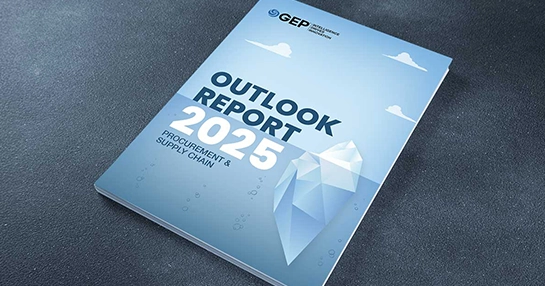
Say No to Downtime, Simplify MRO Procurement with Smart Intake Management
- Smart intake management turns MRO procurement from reactive firefighting into proactive control.
- Predictive intake keeps plants running by reducing costly downtime before it happens.
- AI-driven intake brings speed, accuracy and smarter supplier decisions into everyday procurement.
October 29, 2025 | Procurement Strategy 4 minutes read
Let’s be honest: when procurement leaders talk about digital transformation, MRO procurement rarely makes the highlight reel. Big categories like direct materials or strategic sourcing usually steal the show. Yet the unglamorous world of MRO procurement —the spare parts, consumables, and repair services that keep everything running—can quietly drain budgets and grind operations to a halt.
The real choke point isn’t just the suppliers or the parts; it’s the way requests enter the system. Clunky intake processes slow everything down. That’s why smart intake management is starting to get serious attention. Done right, it doesn’t just speed up approvals. It cuts downtime, trims costs, and gives procurement the credibility of being an enabler, not a roadblock.
Understanding MRO Procurement
MRO sounds routine, but it’s anything but. Think of it as the plumbing behind the walls: invisible until something breaks. And when it does? A single missing sensor or bearing can halt production, push delivery dates back, and eat into margins.
The challenge is complexity. Thousands of low-value items, scattered suppliers, and unpredictable demand. Traditional procurement treats MRO like background noise—but for operations teams, it’s often the difference between business as usual and crisis mode. Intake management decides which side of that line you land on.
Ready to make MRO procurement faster, smarter, and more resilient?
Explore how GEP can help.
The Real Challenge: Why Traditional MRO Procurement Slows Operations
Lengthy MRO Procurement Cycles Result in Costly Downtime
With emails, spreadsheets, and manual forms, it can take days—sometimes weeks—for requests to crawl through the system. By the time a part gets approved, equipment may already be down. Every day of downtime is lost productivity you can’t win back.
Manual Request Processes Lead to Maintenance Backlogs
Technicians describe what they need in free text: “the small gasket near pump three.” Procurement then wastes hours decoding the request, confirming specs, and chasing inventory data. Multiply that by hundreds of requests, and you get a backlog no one can clear.
Limited Inventory Visibility Triggers Emergency Purchases
When you don’t know what’s already in stock, you end up over-ordering or placing emergency buys at premium rates. It’s reactive, expensive, and frustrating for everyone involved.
Smart Intake vs. Traditional MRO Procurement: Key Differences
Procurement Speed and Efficiency
Requests are routed automatically. Approvals happen in hours, not days.
Accuracy in Inventory Management
The system checks existing stock before anyone raises a PO, avoiding unnecessary orders.
Streamlined Approval Workflows
Rules-based automation handles routine items. People only step in for exceptions, freeing bandwidth for strategic work.
Intelligent Supplier Selection
AI matches the right request to the right supplier based on data—price, performance, and reliability—not guesswork.
How Smart Intake Management Revolutionizes MRO Procurement
Automated Intake and Order Processing
Digital forms standardize how requests are logged. Instead of messy free text, technicians choose from predefined options, making it easier to process orders right the first time.
Predictive Maintenance Combined with Inventory Optimization
When machines send early warning signals through IoT, smart intake can automatically generate requests. Parts are lined up before the breakdown happens. It’s proactive, not reactive.
AI-Driven Supplier and Parts Matching
Historical data tells the system which supplier delivers fastest, which part has the best reliability, and what price benchmarks look like. No more emergency buys at inflated costs.
Smooth Integration with Predictive Maintenance Systems
Smart intake doesn’t live in a silo. It syncs with ERP, CMMS, and procurement platforms to ensure a single version of the truth. Everyone—from maintenance to procurement—works off the same playbook.
Ready to leverage agentic AI in procurement?
Get The Agentic AI Playbook to see how leaders are moving from automation to autonomy.
Best Practices for Implementing Smart Intake Management in MRO Procurement
Evaluate Existing Procurement Workflows
Walk through the current workflow. Where are requests stalling? Where are handoffs messy?
Deploy Digital Intake Solutions for Structured Processes
Ditch free text. Use forms that tie directly to catalogs and systems, creating consistency across the board.
Integrate AI-Based Predictive Maintenance Analytics
Let maintenance data shape procurement demand instead of always playing catch-up.
Automate Approvals for Faster Decision-Making
Set thresholds where low-risk requests move through automatically. Managers don’t need to rubber-stamp every nut and bolt.
Use AI for Supplier Benchmarking and Process Optimization
AI can flag who’s slipping on lead times or costs so you can adjust sourcing strategies in real time.
Monitor Performance Continuously with Real-Time AI Insights
Dashboards powered by AI insights show cycle times, downtime savings, and spend efficiency. Data makes the value impossible to ignore.
Align Procurement with Operations
At its core, smart intake is not just about speeding up paperwork. It’s about resilience. In asset-heavy industries, the cost of downtime dwarfs the cost of most MRO parts. Intake is the lever that determines whether procurement is an ally to operations—or a bottleneck.
Leaders who invest in smarter intake workflows build organizations that are faster, leaner, and more predictable. They don’t just cut costs—they protect revenue, productivity, and trust.
FAQs
By linking with predictive maintenance systems, it can raise requests automatically, check stock, and even line up suppliers before a breakdown happens.
Integration ensures intake requests flow seamlessly into existing systems. No manual re-entry, fewer errors, and real-time visibility across functions.



